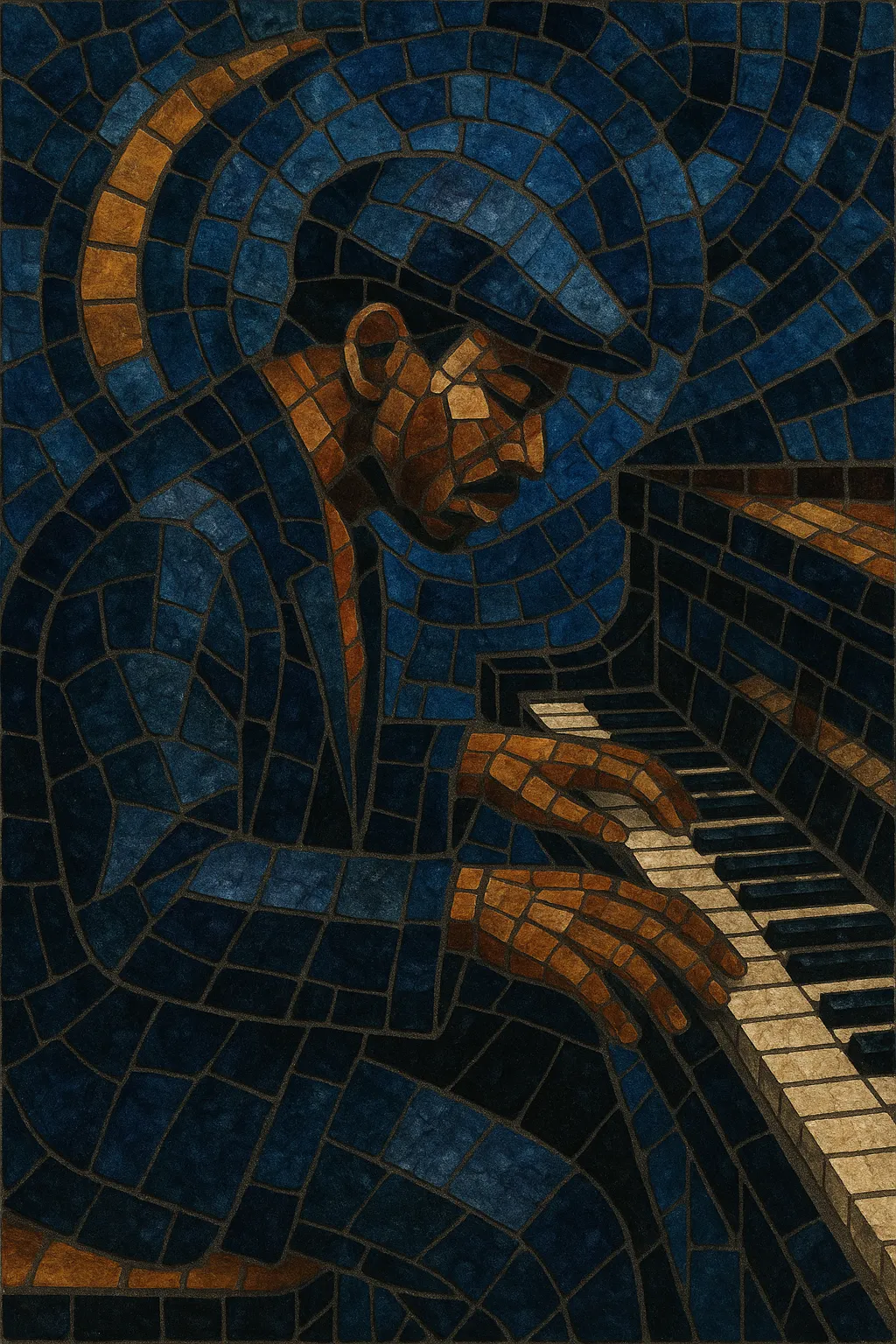
Piano blues is a blues tradition centered on solo piano performance, where the instrument carries both rhythm-section drive and melodic lead. It fuses ragtime’s syncopation, early jazz phrasing, and the 12‑bar blues form into a percussive, highly expressive style.
Hallmarks include steady left‑hand patterns (walking tenths, stride figures, broken octaves, and boogie ostinatos) supporting right‑hand riffs built from the blues scale, blue notes, crushed grace notes, tremolos, and call‑and‑response motifs. It flourished in saloons, rent parties, theaters, and recording studios, giving rise to regional approaches like Chicago’s understated, swinging shuffle and New Orleans’ rolling, rhumba‑tinged feel.
Closely related to barrelhouse and boogie‑woogie, piano blues underpins much of later American popular music, feeding directly into jump blues, early R&B, rock and roll, and rockabilly.
Piano blues emerged in the United States during the 1910s as pianists adapted rural and urban blues vocabulary to parlor uprights and barroom pianos. Drawing on ragtime’s left‑hand syncopation and the 12‑bar blues form, early players translated guitar and vocal inflections to the keyboard with blue notes, slides, and vocal‑like ornaments.
During the 1920s, the style thrived in Southern and Midwestern barrelhouses, juke joints, and rent parties. Pianists developed driving left‑hand figures—from stride‑derived patterns to the repeated, locomotive ostinatos that would be codified as boogie‑woogie. Recording activity in the 1930s (including cutting contests and trio features with bass and drums) popularized the idiom nationwide.
After World War II, piano blues evolved alongside electric, urban blues. In Chicago, a shuffle‑based, band‑ready approach (heard with singers and amplified ensembles) gave the piano a comping, soloing, and arranging role. In New Orleans, a second‑line and Caribbean lilt shaped a distinct, rolling piano blues that bridged directly to early R&B.
Piano blues became foundational to jump blues, early R&B, and rock and roll, informing the time feel, turnarounds, and riff‑based language of these styles. Its techniques—boogie bass lines, 12‑bar forms, blues licks, and gospel‑tinged voicings—remain core vocabulary for blues, rock, and roots musicians.

